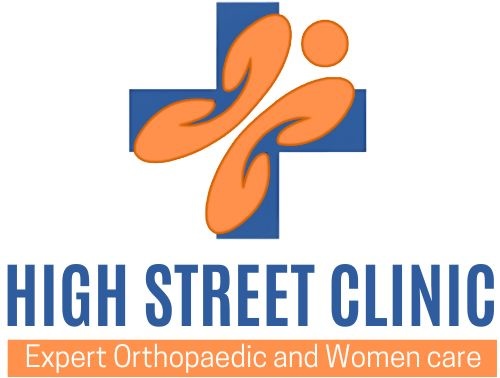The postpartum period, often referred to as the “fourth trimester,” is a critical phase in a new mother’s life. It encompasses the weeks and months following childbirth, during which a woman’s body undergoes significant physical and emotional changes. Understanding and addressing the challenges of this period are essential for the well-being of both mother and baby.
Physical Recovery
1. Rest and Sleep
Adequate rest is vital for healing. While it may be challenging with a newborn, try to rest when the baby sleeps. Short naps can help combat fatigue and promote recovery.
2. Nutrition
A balanced diet rich in proteins, vitamins, and minerals supports healing and energy levels. Incorporate foods like leafy greens, whole grains, lean meats, and dairy products. Traditional Indian postpartum diets often include:
Plenty of Fluids, Iron and Protein rich Diet, Dairy products
- Lean meats: Chicken, turkey, lean beef, liver (high in heme iron, easily absorbed)
- Fish & seafood: Salmon, sardines, shellfish (also rich in omega-3s)
- Eggs (with yolk) – Contains iron and choline for brain health
- Plant-based iron sources:
- Lentils, chickpeas, beans
- Spinach, kale, beet greens
- Pumpkin seeds, quinoa, fortified cereals
- Pair with Vitamin C (enhances iron absorption): Citrus fruits, bell peppers, tomatoes
1. High-Protein Foods (Tissue Repair & Milk Production)
- Lean meats & poultry (chicken breast, turkey, lean beef)
- Fish (salmon, tuna, cod)
- Eggs (whole eggs for choline & protein)
- Dairy-based proteins:
- Greek yogurt (high in protein & probiotics)
- Cottage cheese (slow-digesting casein protein)
- Paneer (Indian cottage cheese – great for vegetarian diets)
- Plant proteins: Tofu, tempeh, lentils, chickpeas
2. Dairy Products (Calcium & Vitamin D for Bone Health)
- Milk (whole or fortified with vitamin D)
- Yogurt (probiotics aid digestion)
- Cheese (moderate amounts – good for calcium)
- Ghee (clarified butter) – Traditional postpartum food in many cultures for energy
- Ghee: Believed to aid in recovery and provide energy.
- Laddu: Made with nuts and seeds to boost immunity.
- Herbal Teas: Such as cumin or fennel tea to aid digestion.
3. Hydration
Staying hydrated is crucial, especially for breastfeeding mothers. Aim to drink at least 8-10 glasses of water daily.
4. Physical Activity
Engage in light exercises, like walking, after consulting with your doctor. Gentle movements can improve circulation and mood.
- Maintain personal hygiene
- Gentle Perineal & Wound Care
- Clean with warm water (or a peri bottle) after using the toilet.
- Change sanitary pads every 2–4 hours; avoid tampons.
- Keep C-section stitches dry & clean (pat dry, no scrubbing).
- Daily Showering & Hand Washing
- Bathe daily with mild, unscented soap.
- Wash hands before handling pads, breastfeeding, or touching the baby.
- Breast & Nipple Hygiene (If Nursing)
- Rinse nipples with water only (no soap).
- Change nursing pads frequently to prevent infections.
- Clean, Breathable Clothing
- Wear loose cotton underwear and change clothes daily.
- Avoid tight clothing over C-section scars or stitches.
- Monitor for Infections
- Watch for fever, foul odor, pus, or excessive bleeding.
- Seek medical help if symptoms worsen.
Emotional Well-being
1. Baby Blues vs. Postpartum Depression
It’s common to experience mood swings, irritability, or anxiety after childbirth. However, if these feelings persist or intensify, it may indicate postpartum depression. Seek professional help if needed.
2. Support System
Lean on family, friends, or support groups. Sharing experiences and seeking help can alleviate feelings of isolation.
Traditional Postpartum Practices in India
India has a rich heritage of postpartum care practices:
1. Ayurvedic Massages
Regular massages with herbal oils are believed to improve circulation, relieve muscle tension, and promote relaxation.
2. Belly Binding
Wrapping the abdomen with a cloth is thought to support the uterus and abdominal muscles, aiding in recovery.
3. Herbal Baths
Bathing with herbal concoctions can help soothe the body and prevent infections.
Breastfeeding and Infant Care
- Breastfeeding: Aim to breastfeed exclusively for the first six months. It provides essential nutrients and strengthens the baby’s immune system.
- Latching and Positioning: Proper techniques can prevent discomfort and ensure effective feeding.
- Consult Lactation Experts: If facing challenges, seek guidance from professionals.
Breastfeeding works on demand and supply the more you latch the baby more milk will be produced.
(Galactogogues like Fenugreek, shatavari, oats may help in improving milk production. Medications are also available only with prescription.)
Postpartum Check-ups
Regular medical check-ups are essential to monitor recovery, address concerns, and receive guidance on family planning and contraception.
Postpartum recovery is a multifaceted journey encompassing physical healing, emotional adjustments, and adapting to new responsibilities. Embracing both modern medical advice and beneficial traditional practices can pave the way for a smoother transition into motherhood. Remember, seeking help and prioritizing self-care are not just beneficial—they’re essential.
FAQs
Q1: How long does postpartum recovery take?
Recovery varies for each individual. Generally, it takes about six weeks, but some aspects, like emotional well-being, may take longer.
Q2: Can I start exercising immediately after childbirth?
It’s advisable to wait until your doctor gives the go-ahead, usually after six weeks, especially after a C-section.
Q3: Are traditional postpartum practices safe?
Many traditional practices can be beneficial. However, always consult with healthcare professionals to ensure they’re appropriate for your situation.
